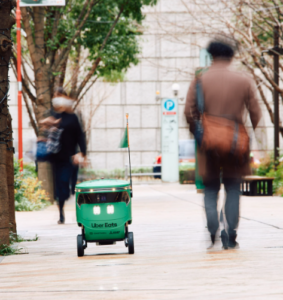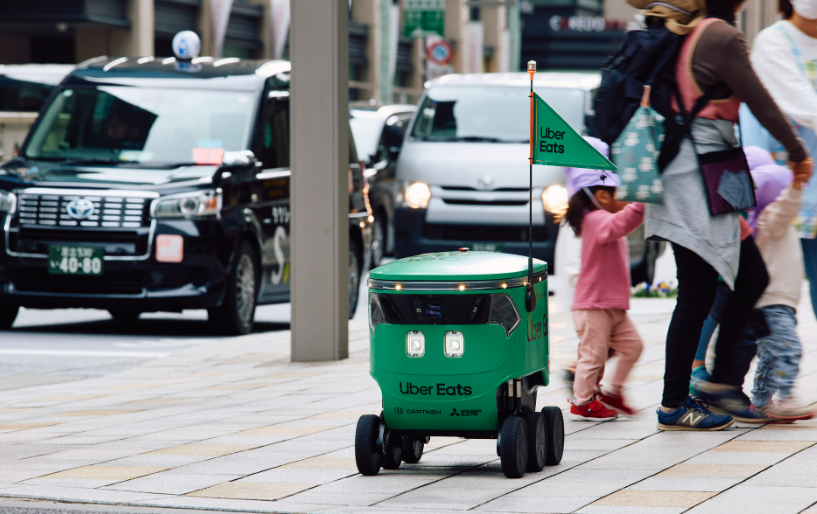Autonomous sidewalk robots will soon provide food deliveries in Japan thanks to a new partnership between Uber Eats Japan, Mitsubishi Electric and Cartken.
Deliveries are expected to begin in part of Tokyo by the end of March 2024, via Cartken’s “Model C” robot.
Robots will be matched to deliveries through the Uber Eats app, with operations overseen by Mitsubishi Electric.
Shintaro Nakagawa, General Manager of Uber Eats Japan, said that the company is thrilled about the partnership. “Uber Eats already offers delivery by bicycle, motorcycle, light cargo, and on foot here in Tokyo, and now we are adding a completely new delivery method, robot. We look forward to bringing fun surprises and a high level of reliability to our customers and merchants.”

Cartken’s “Model C” robot travels at speeds up to 3.4 mph, about equal to the walking speed of an adult. The machine uses AI to detect objects and localization algorithms for navigation.
The “Model C” robot travels at speeds up to 3.4 mph, which is about equal to the walking speed of an adult. The system uses AI models to detect objects as well as localization algorithms to navigate.
Robots contain an insulated 27-liter cargo bin for food and other items. This ensures items are kept at the correct temperature when making deliveries. Additionally, pedestrians filmed by the robots’ cameras are masked to protect privacy.
In the U.S., autonomous delivery operations have already been successfully implemented. The move into Japan marks the first international market to have autonomous delivery as an option on the Uber Eats platform.
Anjali Jindal Naik, Co-founder and COO at Cartken, expressed excitement over expanding the partnership to the streets of Tokyo. “This collaboration signifies a leap forward in redefining the future of food delivery, making it more accessible and sustainable to consumers in Japan,” she said.
Shoji Tanaka, Senior General Manager of Advanced Application Development Center at Mitsubishi Electric Corporation, commented that robot delivery is a possible solution to the logistics crisis that is expected to worsen in the future.
“We hope that this newly announced initiative will serve as a catalyst for the spread of robot delivery services in Japan,” Tanaka said, adding, “In the future, we will work with buildings and factory infrastructure, which is one of our strengths, so autonomous robots will be able to deliver inside various facilities.”


